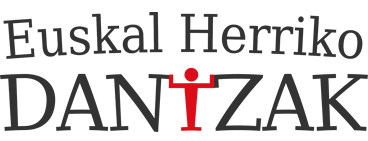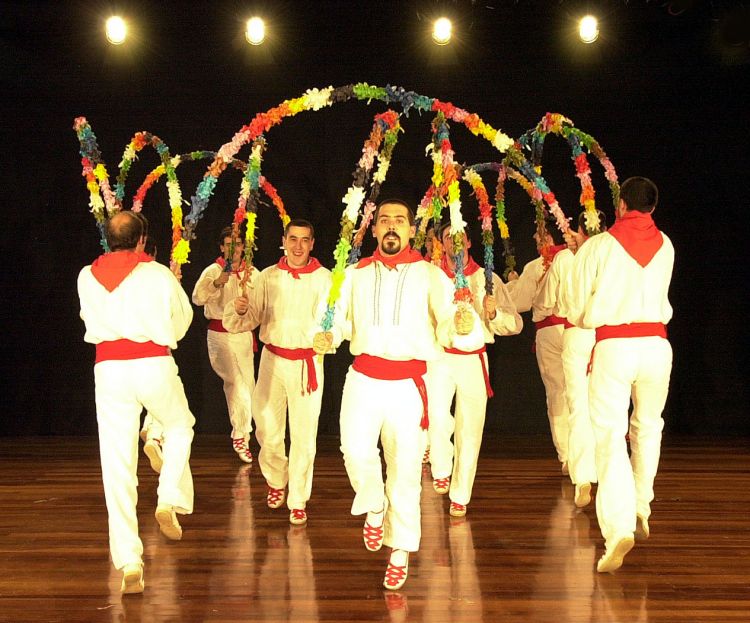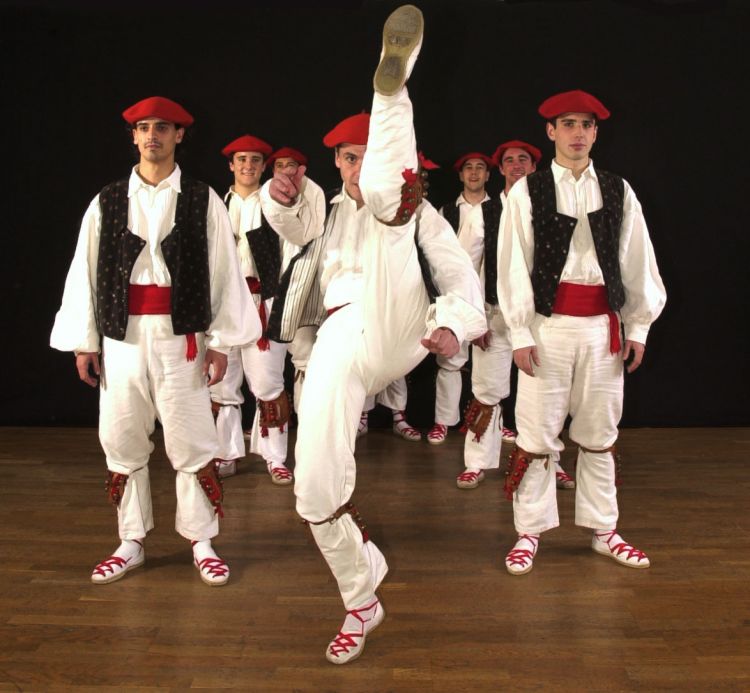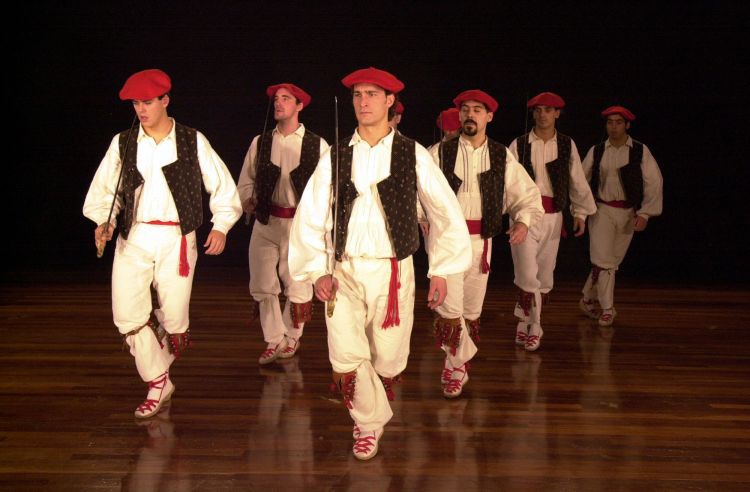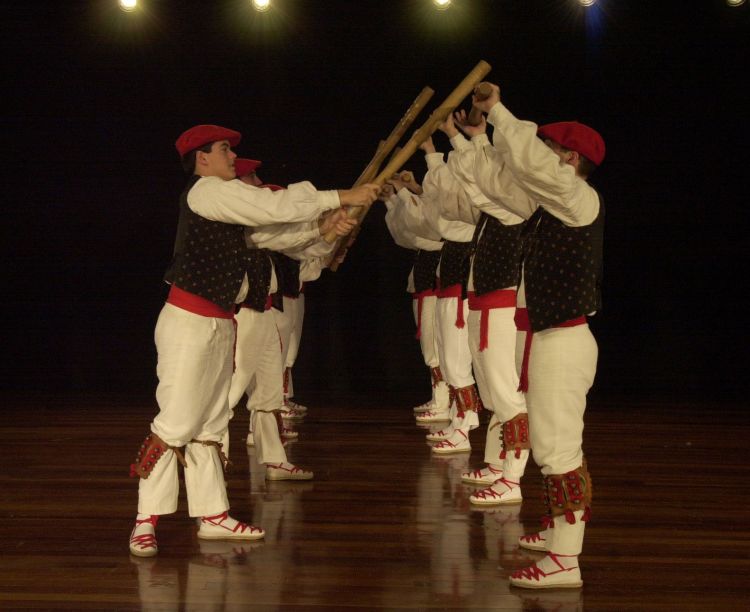Gorulari
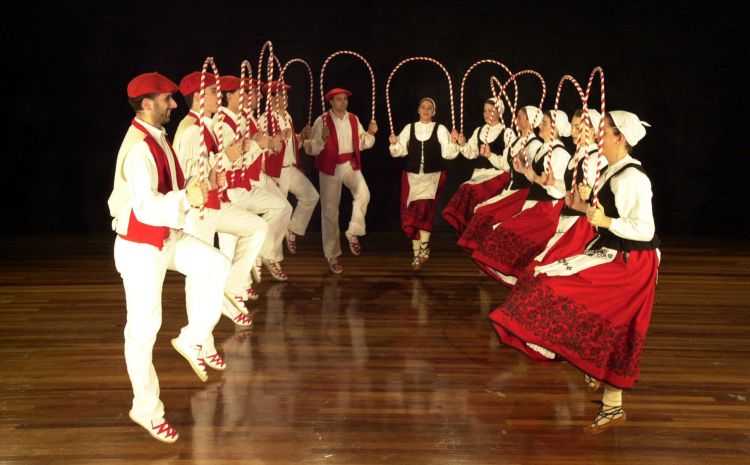
The name Gorulariak derives from the Basque word goru, which means "spinning wheel" and -ari or -lari, a suffix identifying a person who does something. It might well be translated as "those people of either sex who work on a spinning wheel" or simply "spinners", regardless of gender. In Spanish it is generally rendered in the feminine, as this is work traditionally done by women, though it is true that there have been male garment makers of great and lesser renown whose work should not be looked down upon. Gorulariak, in this sense, means the group of spinners and seamstresses who perform the dances described below.
Clothing
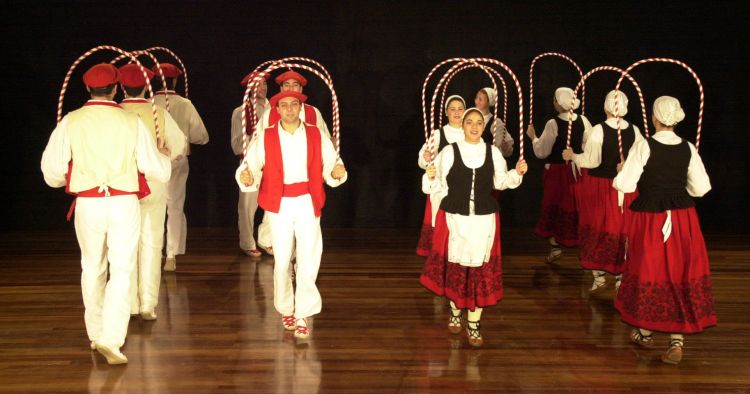
In his article Folklore del Duranguesado, Segundo de OLAETA2, a pioneer researcher of Basque folklore, looks at the figure of the spinner in dance performances, and cites as a fact that the costumes worn by spinners in Bizkaia (gorulariak) were derived from the undergarments of the women from Navarra who went to Bizkaia to work as servants on farmsteads. There they worked (though the exact period referred to is not clear) under a governess who decided which of them stayed where and on what terms, and who supervised their work and their relations, good or bad, with their masters and with local people. Beneath their underskirts, these domestic servants wore coloured slips adorned with ribbons (usually black) which enabled them to loosen and tighten their garments. It is these undergarments with their long-legged pants, coloured slips and underskirts with black trims and their bodices and blouses which have come down to us as a dance costume.
Implements
Bows
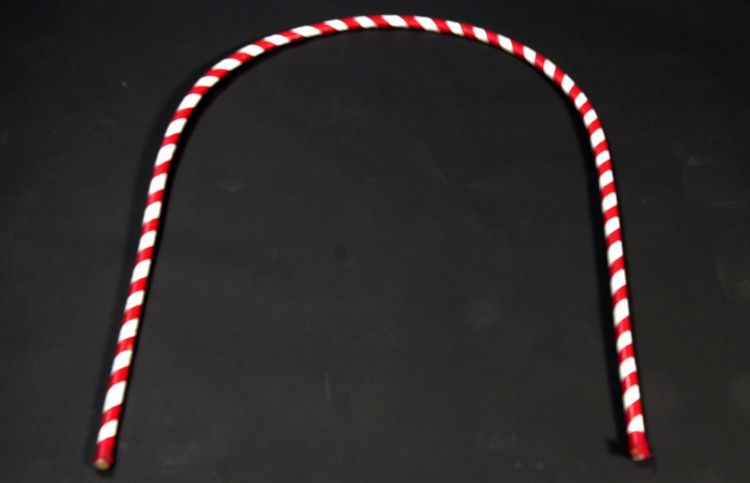
The Gorulari, as a general term, covers three different types of dance. On the one hand there is the Arku Dantza or bow dance, in which the positions of the dances may vary but they all carry wooden bows. Secondly there is the ribbon dance (Zinta Dantzak or Domingillue) in which the performers intertwine and untwine coloured ribbons attached to a post which is sometimes topped by a mannequin or mechanical ornament. And finally, in exhibitions in the late 19th century, a dance by a group of spinners was feature. Its choreography is not known, but it was probably a tribute to their work.
Music
Bows
We have no direct written records concerning the instruments played for
the dances, but we can assume that, as for the rest of the dances in the
Dantzari Dantza cycle, the txistu flute and tamboril drum were used,
accompanied occasionally by the atabal (kettle-drum) and other
flute-like instruments.
History and Geography
The term Gorulariak describes a set of three dances performed in the late 19th century at Flower Festivals in Durango. In his work Danzas Vascas en las Escuelas Iñaki IRIGOYEN writes that after the Basque language festivals organised by Antonio Abadie in Urruña in 1853, further festivals were arranged in Bilbao (1882) and Markina (1883) and it was agreed to hold the next festival in Durango. To mark the occasion, local people under the direction of Ramón Iñurieta presented a performance called gorulariak, from which these dances took their name.
In all there are three dances: one representing spinning work, which has now lost much of its importance, a bow dance and a ribbon dance. The bow dance was for girls and the ribbon dance for boys. Iñaki IRIGOYEN goes on to say: "At these festivals, where Ramón IÑURRIETA was one of those in charge of the dancing, the people of Durango organised groups of children to demonstrate the old dances which had been performed in Durango, and also included a new creation based on a group of spinners."
There is no record to indicate whether this was an ad hoc exhibition or a play-dance in which the participants imitated the work involved in certain occupations, along the lines of dances found elsewhere (Zapatain Dantza, etc.).
Along with this dance bow and ribbon dances were performed. Iñaki IRIGOYEN gives the following information: "(...) Written records exist of two of them: the Dominguillo from earlier centuries, performed together with the dances from Durango, and the bow dance in the 19th century. The most detailed references are found in Noticias Históricas de Tavira de Durango by VEITIA Y ECHEZARRETA and the accounts of the visit of King Ferdinand VII to Durango in 1828."
The following is copied from those accounts: "Two groups of young men and women did go before them, gracefully dressed, who did merrily dance the dances of that place (...). Certain chosen young men did dance bearing on the end of a long pole a mannequin known as Dominguillo, which was made to put on faces and postures in time with the music which did greatly amuse the people; young girls bearing bows did perform counter-dances ...". Iñaki IRIGOYEN also cites VEITIA Y ECHEZARRETA in his reference to the royal visit, saying: "The Dominguillo was also brought out to amuse the crowd: this was a doll on the end of a pole after the manner of a standard, with eight ribbons nailed to it at the same height below, each of which was held by a boy of the group formed for the dance, while an older youth bore the pole. Figures were danced with the ribbons, twining them geometrically about the pole in various ways and untwining the patterns without stopping the dance."
"Before that time we knew the Dominguillo only by name, for when we were young we knew two old men nicknamed Artacámara and Mocholino in whose youth the doll mist have been brought out often, for there was a rhyme which went: ´Artacamara Dominguillua, Mocholiñuak lepuan´.
"It is said that after 1829 or 1830 it was hidden away or undone by Jose Antonio de Areitio, who thought it an object of derision for the people. But the dance was performed occasionally at Carnival time, albeit without the doll, and the boys went through the same figures and patterns with the pole and ribbons".
Iñaki IRIGOYEN gives a popular account of the origin of the ribbon dance:
"After a battle between the people of Durango and the Moors (perhaps the Battle of Tavira) in which a Moorish chief called Bajamelú was killed, the people of Berriz, one of the parishes of Durango, celebrated their victory by impaling the body of the dead chief on a pole through the anus. The Dominguillo was made up later to commemorate that victory".
The performance showing the work of spinners seems to fit into a specific social context in which there was a need to represent work which was becoming obsolete or antiquated.
Ribbon dances are found all over Europe and in America, and are usually interpreted as being agricultural dances in which the intertwining and unravelling of ribbons around a post, usually containing magical fertility symbols, represents a symbolic death and resurrection of nature rather than the unlikely death of a historical war chief. Neither of the authors cited above gives a satisfactory explanation of the origin of bow dances. More detailed studies of this matter are needed.
ï»
